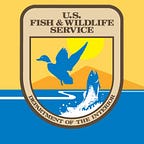Recycling Christmas Trees for Wildlife
Giving new life to your tree after the holiday season
Each year, about 25–30 million real Christmas trees are sold in the United States, mostly from a selection of about 16 species of tree that we commonly call a “Christmas Tree.” Decorated with lights and ornaments, they become backdrops for family photos and serve as a resting place under which we put gifts for loved ones.
Ultimately, the day comes when they have served their purpose for the holiday. Don’t just trash them! Often these trees can benefit your local wildlife, the soil in your yard, or even nearby restoration projects.
After you’ve removed all the plastic bags, tinsel, and ornaments, here are some easy ways for you to help wildlife or enrich your local area with these trees after you’ve enjoyed them.
Decorate Your Tree for Wildlife
If you‘ve got the space in the backyard and like watching wildlife, you can put your tree outside and decorate your tree with edible ornaments or popcorn strings so that you feed wildlife like birds and squirrels. Decorating your tree for wildlife can help them at a time when food is scarce. Most of the recipes call for peanut butter, fresh fruit like grapes, berries, or apples, suet, and birdseed.
Create a Brush Pile with Your Tree
The easiest thing you can do if you have a yard? Create a brush pile! A brush pile often consists of leaves, logs, and twigs so an old Christmas tree can make a great base. It directly benefits the wildlife in your backyard during winter months because brush piles and dead trees offer food and needed protection from the weather. While we understand that not all communities allow for them, check locally to see if it’s a possibility.
Help Enrich Fish Habitat and Prevent Erosion
There are all sorts of great local projects that take in Christmas trees and use them for restoration projects. And it’s possible your community is already working to donate trees to these efforts. Several curbside tree recycling programs help create bird and fish habitat. Bayou Savage National Wildlife Refuge uses a number of New Orleans’ recycled Christmas trees that are collected to establish a wave break in open ponds on the refuge. Other projects have helped provide fish habitat, restore dunes and prevent erosion, provide electricity, and mulch. You can also donate it to local wildlife rehab centers, give it to goats When in doubt, check-in with your local wildlife rehab center to see if they could use it or your state or natural resources department.
Examples of Local Projects:
- Fish Reef Restoration Project in Kentucky
- Habitat for birds in Maryland
- Erosion control for storms in New York
- Donating Trees to Goats in Maine
- Fish habitat in Arkansas
-Helping rehabbed wildlife feel at home in Wisconsin
-Dune Restoration in North Carolina
Check-in with your local events and even if you don’t have a tree- you may be able to volunteer.
Use it Yourself —Like in the Garden or Eat it!
You can also use your recycled Christmas tree to enrich your soil by composting it or using the pine needles and boughs to cover your garden bed. Chop the trunk and branches and break your tree down, this will allow you to add some nice insulation to your garden. There are also opportunities for YOU to eat it.
Share Your Ideas
If you used a real tree this year, let us know what you’re doing with it in the comment section below, or share a link to any places you know of that use Christmas tree donations to help wildlife or the environment.
What Plans Do You Have for Your Christmas Tree?
By Danielle Brigida, National Social Media Manager
